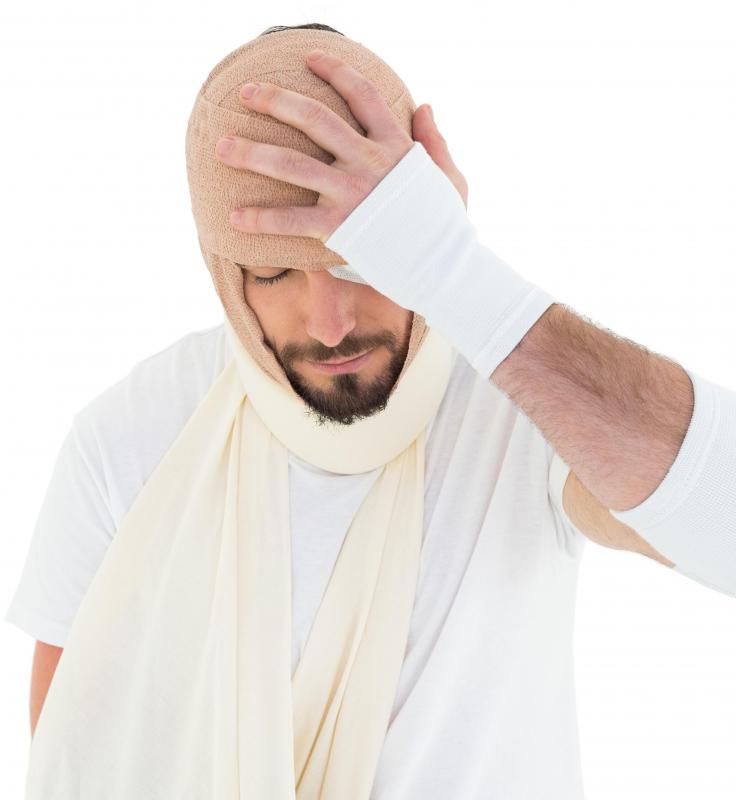At WiseGEEK, we're committed to delivering accurate, trustworthy information. Our expert-authored content is rigorously fact-checked and sourced from credible authorities. Discover how we uphold the highest standards in providing you with reliable knowledge.
What is the Splenius Capitis?
The splenius capitis is a muscle located in the back portion of the neck. This muscle is responsible for connecting the vertebrae of the neck to the base of the skull. The splenius capitis muscle is instrumental in allowing the head and neck to flex and rotate. The upper portion of the spine is able to rotate as a result of this muscle as well. If this muscle becomes damaged, severe neck and face pain may become present.
The nuchal ligament is the point of origin for the splenius capitis. This structure is basically a membrane made from fibrous connective tissue found in the neck. In humans, this ligament has lost much of its evolutionary significance, although it is believed to have once helped to support the weight of the head.

The mastoid process also serves as a point of insertion for the splenius capitis muscle. The mastoid process is a bony projection shaped much like a pyramid and is found on each side of the skull, just behind each ear. This projection is apparently only present in humans, along with those animals that walk upright, such as apes and chimpanzees.
The nerve supply to the splenius capitis muscle comes from the second posterior branch of the cervical nerve. The cervical nerves originate in the spinal cord and travel through the vertebrae, which are located just below the base of the skull. The branch of this nerve that serves to supply the splenius capitis muscle is attached to the branch lying immediately underneath.

When a patient complains of persistent neck and facial pain, a condition known as splenius capitis muscle syndrome is sometimes found to be the cause. This medical condition can occur from such things as emotional distress, physical trauma, or poor posture. Symptoms of this muscle condition often mimic those of a migraine. For this reason, proper diagnosis can sometimes prove to be difficult. Often, in addition to a severe headache, pain will be present in the arm and shoulder.

Once splenius capitis muscle syndrome has been diagnosed, the patient will likely be referred to a pain management specialist. The most successful treatment for this painful condition includes a combination of oral and injectable medications. Pain relief using this combination generally lasts for several weeks or months before needing to be repeated. In more serious cases, when the patient does not respond favorably to this treatment, a more invasive technique is sometimes necessary. Surgery may be recommended to repair the damaged muscle and surrounding tissue. In some cases, the nerve supplying the muscle can be permanently put to sleep in order to stop the pain.
AS FEATURED ON:
AS FEATURED ON:















Discuss this Article
Post your comments